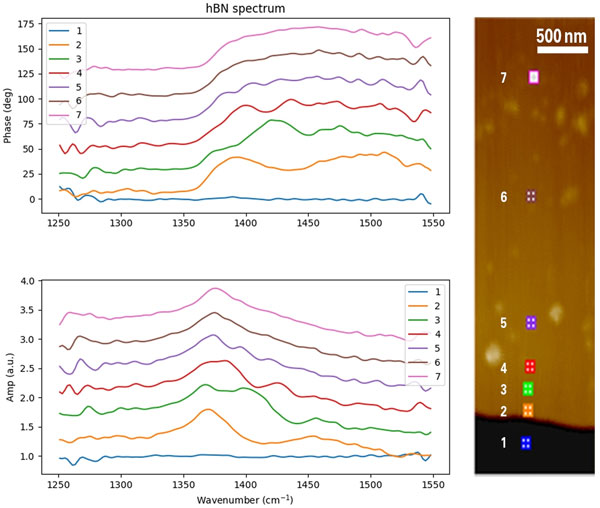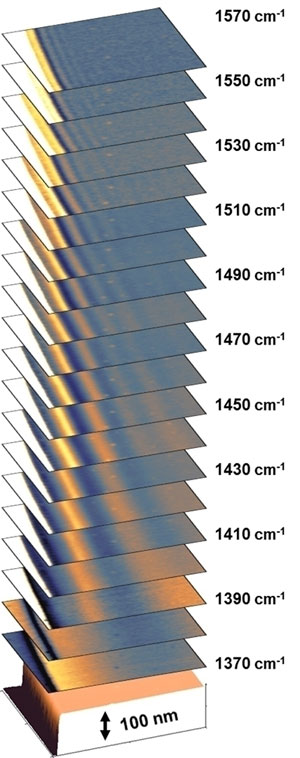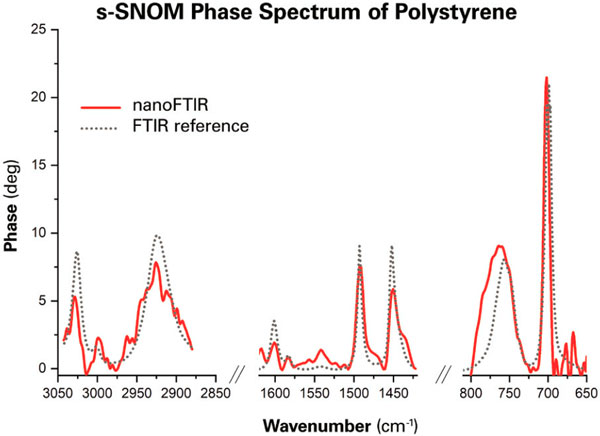nanoIR3-s Broadband
The most advanced s-SNOM based nanoscale FTIR spectroscopy system available
The Bruker nanoIR3-s Broadband is a nanoscale FTIR spectroscopy and s-SNOM imaging system. It offers the broadest available spectral range, together with high resolution nanochemical and nano-optical imaging.
The system combines established technology from the Anasys nanoIR3-s with the latest OPO/DFG femtosecond laser technology, for unmatched performance and flexibility.
- Broadest spectral range available today for spectroscopy and high resolution nanochemical imaging (670 to 4000 cm-1)
- High performance spectroscopy and imaging for 2D materials and graphene
- Nanoscale material property mapping and environmental control options
Contact us for more information and quotes:
+44 (0)1223 422 269 or info@blue-scientific.com

Nanoscale FTIR Spectroscopy in 2D Materials
- Case study: New implications for engineered nanophotonics at the University of New South Wales
- Application note: 2D Materials Characterisation using Nanoscale FTIR Spectroscopy and Near-Field Imaging
- Application note: Spatiospectral Nanoimaging of Surface Phonon Plasmons

Spectroscopy of hBN (2D hexagonal boron nitride). Phase (top) and amplitude (bottom) at various sample locations highlighted in the topography image (right).
High Resolution Imaging
The nanoIR3-s Broadband delivers high resolution nano-optical images of a wide range of optical phenomena, including graphene plamonics and surface phonon polaritons in hexagonal boron nitride (hBN), and chemical imaging of biological and organic samples.
The example below shows near-field optical images using a spatio-spectral scan. These illustrate a complete surface phonon polariton frequency response on a hBN flake across a 200 cm-1 range. Taken with 3 cm-1 spectral resolution and 10 cm-1 imaging step resolution. 1.5×1.5 µm with 10 nm pixel resolution.



